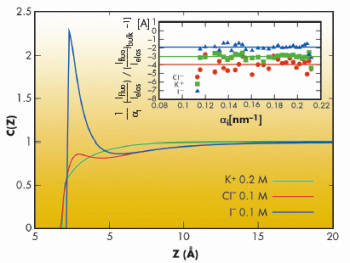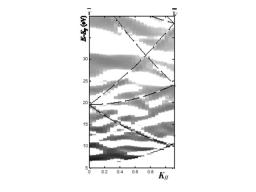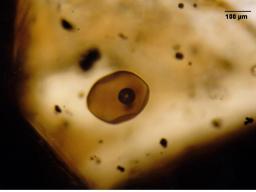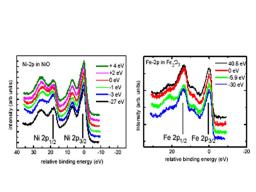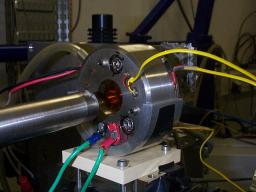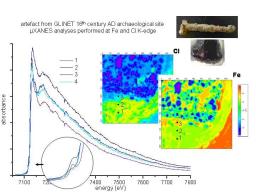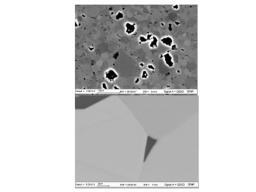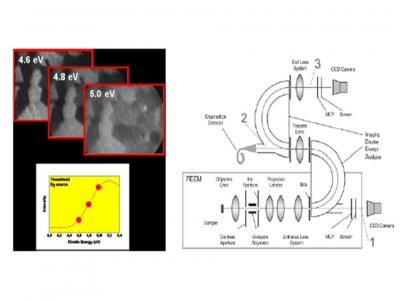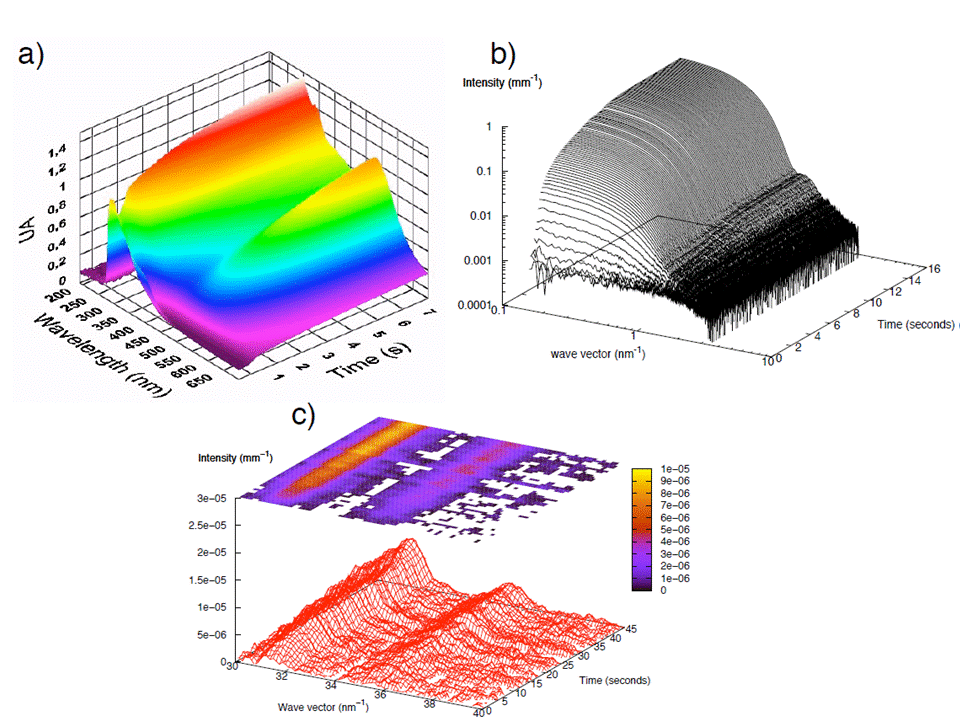Rayonnement synchrotron

Photographie aérienne de l'ESRF (Grenoble) (Crédit Photo : © Denis Morel / ESRF)
#123 - Màj : 22/04/2010
Voir aussi
Luc Belloni, Ioulia Chikina, Viswanath Padmanabhan, Luc Girard, Jean Daillant, Olivier Spalla, Perrine Maillet
Les effets ioniques dits spécifiques regroupent tous les effets certes d'origine électrostatique mais qui ne peuvent être expliqués par la seule valence des ions.
N.T. Barrett ; V.N. Strocov (SLS, Switzerland) ; E.E. Krasovskii (Univ. Kiel, Germany) ; W. Schattke (Univ. San Sebastian, Spain) ; H. Berger (EPFL, Switzerland), D. Schrupp (Univ. Augsburg, Germany) ; R. Claessen (Univ. Würzburg, Germany) ; J.-M. Themlin
In photoemission, the initial-state k⊥ can be deduced if the final-state surface-perpendicular dispersion E(k⊥) into the crystal bulk is known.
H. Bureau, C. Gondé, B. Ménez, M. Semet
Melt and fluid inclusions in olivines from the last 197 days long eruption of Piton de la Fournaise (Réunion Island) that began March 9, 1998, have recorded a range of volatile partial pressures.
H. Magnan, A. Barbier ; Coll. P. Le Fèvre, D. Chandesris (Soleil) ; J. Jupille (Institut Nanosciences de Paris) ; S. Bourgeois (LRRS) ; W. Drube (HASYLAB, Hamburg, Germany) ; T. Uozumi (Graduate School Engineering, Osaka, Japan) ; A. Kotani (Spring-8, Hyo
K-edge X-ray absorption and 2p-XPS spectra of 3d-element oxides present spectral features which cannot be explained within a simple one-electron model.
H Bureau, D. Massare
Micro-experimental studies require the use of diamond anvil cells, allowing observation and in situ characterization of the studied phase equilibrium using classical spectroscopy techniques (Infrared, Raman, X-Ray Fluorescence, X-Ray diffraction…).
H. Bureau, B. Ménez, V. Malavergne, A. Somogyi, M. Munoz, A. Simionovici, D. Massare, M. Burchard, S. Kubsky, C. Shaw
Subduction zones are the locations where the oceanic crust, which experienced intense interaction with seawater, is buried back into the Earth’s mantle.
Solenn Réguer, Philippe Dillmann, Pierre Lagarde*
Synchrotron based micro X-ray Absorption Spectroscopy was used to obtain micro scale chemical information such as coordination and oxidation state of phases constituting corrosion products within archaeological iron artefacts buried in soil.
N.T. Barrett, L.F. Zagonel, V. Fouquet, M. Gautier-Soyer ; Coll. M. Bäurer, M. Hoffmann (Univ. Karlsruhe, Germany)
This research is carried within the framework of the 6th PCRD INCEMS project.
N.T. Barrett, L. Zagonel, S. Palacin, J. Charlier ; Coll. O. Renault, A. Bailly, R. Brochier, A. Chabli (CEA/LETIMinatec) N. Brookes, J. Cezar (ESRF) ; K. Winkler, B. Kromeker, D. Funneman (Omicron) ; S. Poissonet (CEA/SRMP)
Photoelectron emission microscopy combined with intense photon sources is becoming a powerful analytical tool with both spatial resolution down to a few nanometers and spectroscopic capabilities.
Prediction of long term corrosion (on several hundred years) of low alloy steels is a crucial issue in several research domains: metallic cultural heritage conservation, civil engeeniring, etc.
Jun Han (PhD), Sergio Gomez (PhD, University of Vigo), Zeliha Cansu Canbek (running PhD), Fabien Hubert (PhD 2009), Benjamin Abécassis (PhD 2006), Fabienne Testard, Olivier Spalla
General objectives
We aim at understanding the microscopic mechanisms controlling the formation of nanoparticles.
